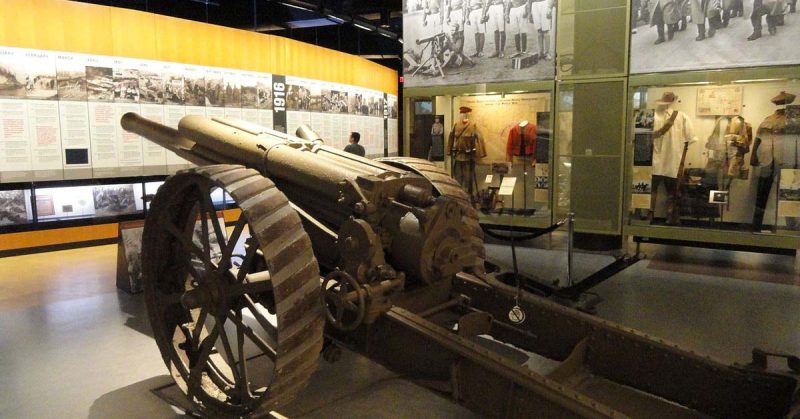On April 6, the US will mark the 100th anniversary of their entry into World War I. The soldiers who fought for the US in that war are commemorated by the 217-foot Liberty Memorial tower in Kansas City, Missouri.
Below the tower is the 50,000 square foot National World War I Museum. More than two million people have visited since its opening in 2006.
As you enter, you cross a plexiglass bridge over 9,000 silk red poppies. Each flower represents 1,000 deaths, reflecting a total of nine million killed in WWI, not counting civilians.
Museum communications chief Mike Vietti points out that WWI was complicated. It was not just a matter of US soldiers helping the British and French against the Germans.
Walking around the museum in a counter-clockwise direction allows you to follow the timeline of the war in a chronological manner. The first gallery shows the events leading up to WWI and the events before the US entered the war. The second gallery shows America’s experiences during the war, the end of the war, and the peace treaties that would lead to World War II.
A small cinema shows the film, “A World on the Edge,” which introduces visitors to the era leading into WWI. At the midpoint, another cinema shows the film, “Should America Enter the War?” Between the audience and the screen is a diorama that includes actual WWI wreckage from the museum’s archives.
The museum contains large, easily-read maps and diagrams to show how different countries formed alliances and how they developed a new type of war driven by technological advances.
Interactive sections in the museum allow visitors to listen to speeches, memoirs, and period music. Propaganda posters are placed throughout the displays. A diorama of a German trench allows you to listen to the sounds of war. A reproduction of a shell crater allows visitors to walk into it.
Other exhibits include a French 6.4-ton Renault FT17 tank with original wood tread spokes and an engine slightly stronger than one on a riding lawnmower.
Major battles are all represented, from the English Channel to the Russian steppes. The sea war, the front in Italy, and campaigns around the world are all mentioned.
Weapons of the era are on display along with letters and other artifacts of the war. There are many combat uniforms from the various countries shown, as well.
Two of the uniforms on display, one German and one American, were both worn by Christian Nicolaisen who was an ethnic Dane forced to serve in the Imperial German Army. He deserted to America, where he was drafted. On the other hand, John Herbst’s paperwork is on display. It shows that he was drafted on November 11, 1918, the official end of the war. He was discharged the same day.
An epilogue section of the museum quotes eight different people discussing what the war meant to them. Quotes come from people like the English author HG Wells and an Austrian soldier named Adolf Hitler, Chicago Tribune reported.
The end of the tour comes at the same bridge over the 9,000 red poppies where it began. Only now, visitors have a much better understanding of what the war meant to those 9,000,000 souls represented there.
